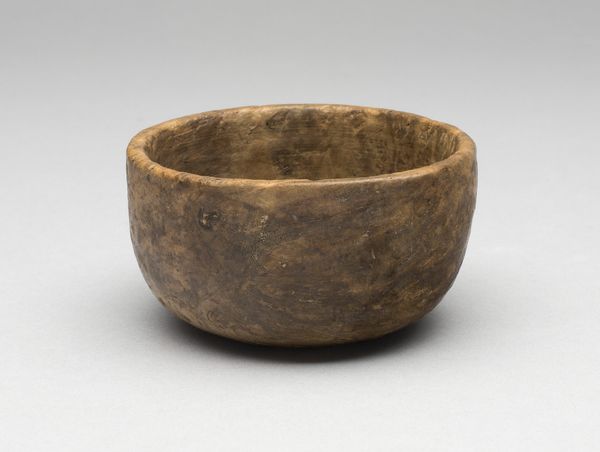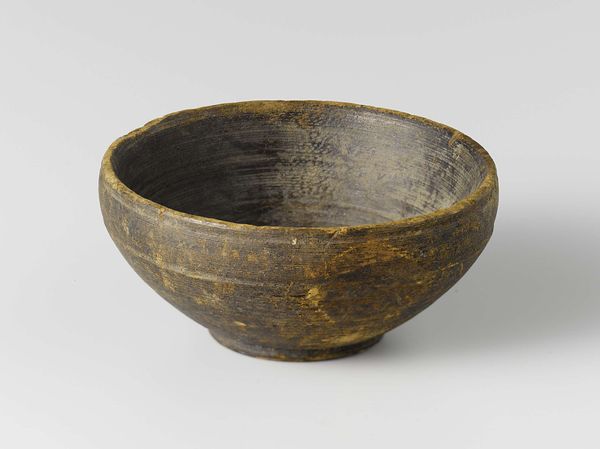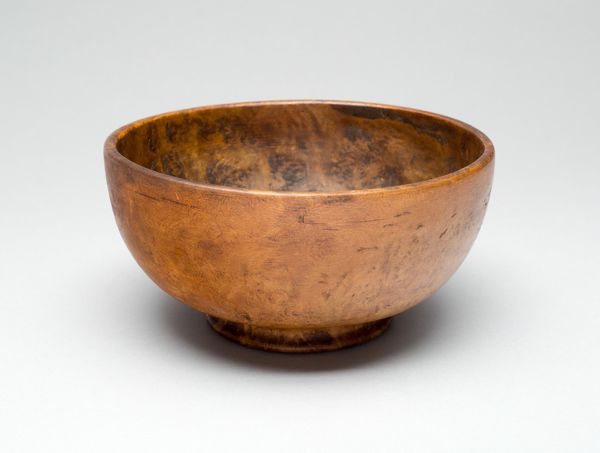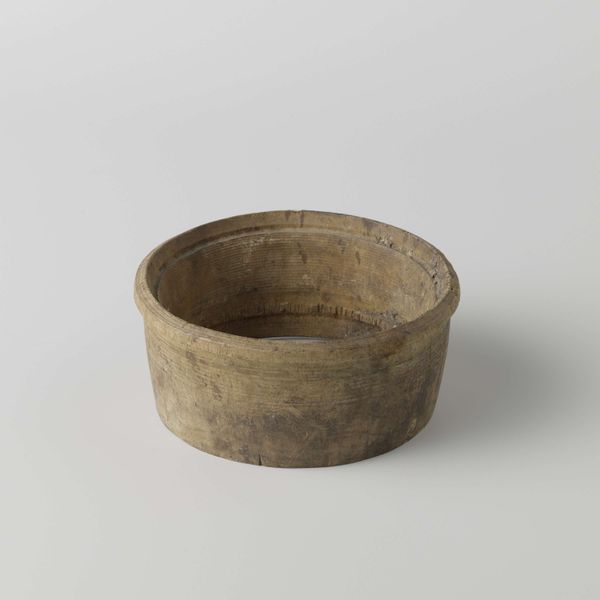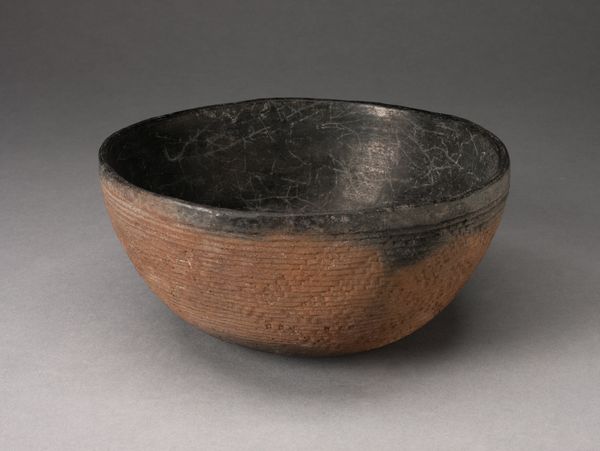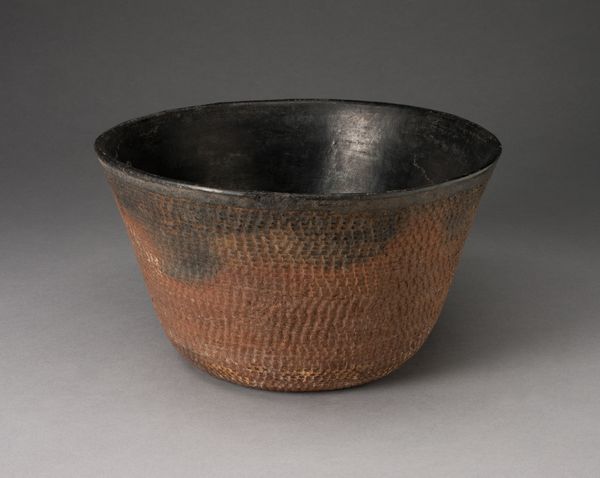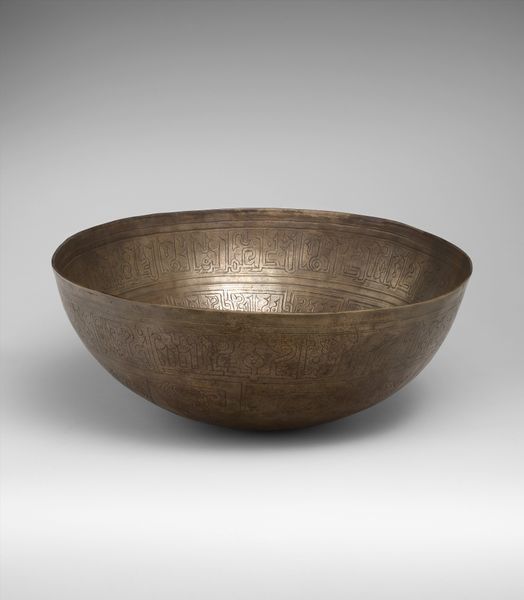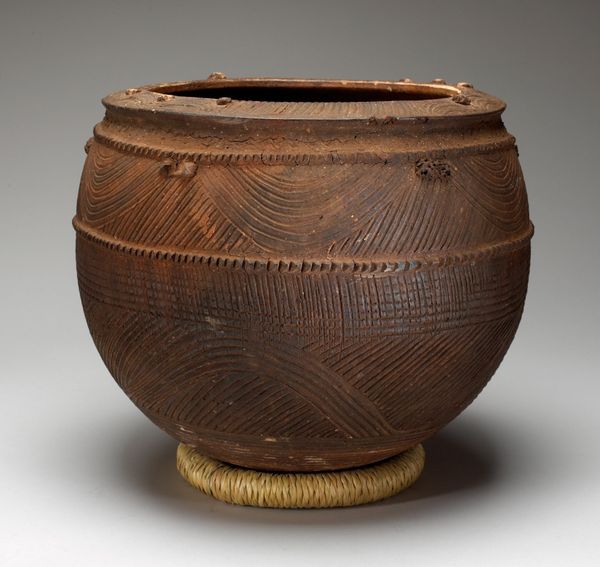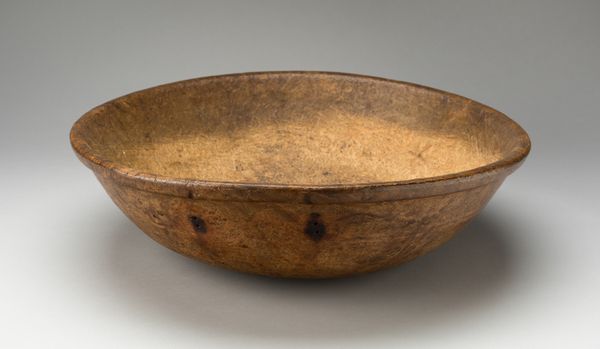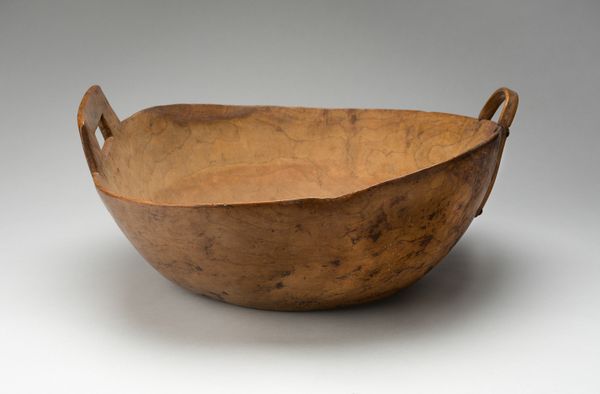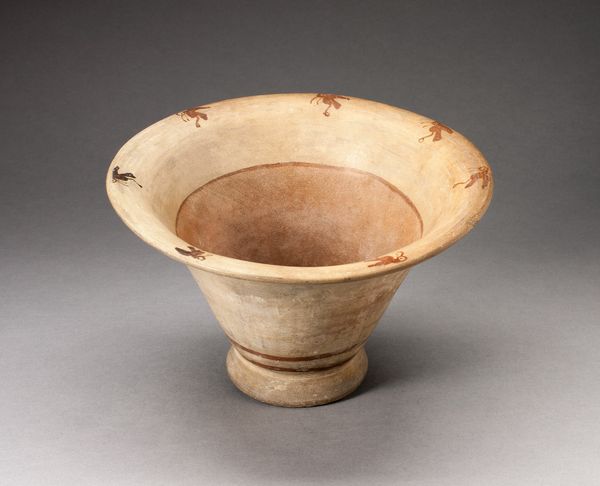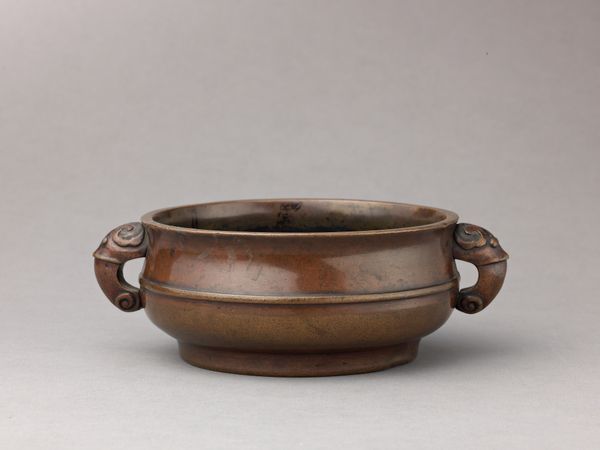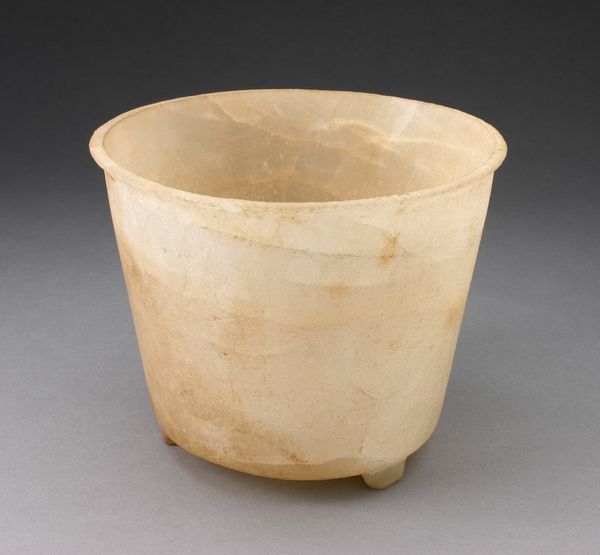
ceramic
#
ceramic
#
stoneware
#
ceramic
#
united-states
#
decorative-art
Dimensions: 11.3 × 17.2 cm (4 5/8 × 6 3/4 in.)
Copyright: Public Domain
Curator: Here we have a utilitarian object elevated to the status of art, an anonymous ceramic stoneware bowl made in the United States sometime between 1820 and 1860. It's currently held in the collection of The Art Institute of Chicago. Editor: It appears quite humble, doesn't it? The bowl presents a warm, earthy palette; the slightly glossy surface seems like it would be smooth to the touch. Curator: Yes, the warmth probably reflects a broader 19th-century American embrace of homespun aesthetics as the nation expanded and industrialization transformed daily life. There's a nostalgic, perhaps even nationalistic, sentiment embedded in these objects. Think of the Arts and Crafts movement yet to come. Editor: I notice how the form is reduced to its essential shape. A hemisphere rests on a slightly flattened bottom and simple ridges accent the lip of the bowl, creating a subtly rhythmic design that brings a sort of stability to it. It draws attention to its materiality through its minimal decoration. Curator: Indeed. Its relative simplicity might also reflect regional variations. Production capabilities and aesthetic preferences certainly varied widely across the country during this period. We shouldn't assume all regions had access to, or valued, elaborate imported wares. Something like this speaks to self-reliance, to a certain democratization of art, perhaps? Editor: I see what you mean. The color and subtle texture of the stoneware harmonize and evoke a feeling of something honest and uncontrived. If it were perfectly smooth, brightly colored, or flawlessly formed, it would completely change its intrinsic power. It transcends function. Curator: I think displaying functional objects like this also begs us to question institutional structures of valuation—who decides what gets framed and put on a pedestal, literally. Whose histories do museums prioritize? Editor: An important point! Analyzing art objects through such lenses can open conversations about meaning beyond form and function. It definitely inspires curiosity. Curator: Absolutely. It reminds us that art is never created, displayed, or appreciated in a vacuum. Editor: And I now realize it’s about the details for me: light, line, tone, texture…they are often the very foundation of significance.
Comments
No comments
Be the first to comment and join the conversation on the ultimate creative platform.
